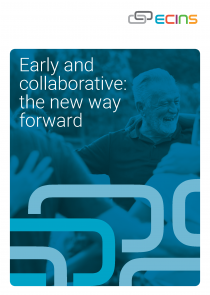With the Government Digital Service (GDS) calling for greater collaboration between policy and digital staff, how can you help your team to see the proverbial wood for the trees?
It’s so easy to get lost in the details and we all have a tendency to overlook the big picture more often than not. But within public services, this mentality can have some serious repercussions. For example:
- It doesn’t promote information sharing.
- It limits advice to strict parameters.
- It lowers job satisfaction as the overall purpose can be missed.
Here are 5 ways to help a team consider the wider scheme of things.
Allocate time for thinking.
Very few of us get the chance to do this, even though it’s so simple. Book time into down tools and get everyone away from the day to day activities that keep them glued to their desks. Consider a change of environment too and maybe even venture outdoors (if it’s warm enough).
Agree on a list of achievable tasks which have a broader impact.
A simple discussion is likely to uncover a number of ways that a team feel they could contribute to a wider aim. Create routines to ensure that these ideas actually get implemented. For example, you might assign liaison roles to give certain individuals the responsibility to share information with other departments. Or it could be a case of setting up a fortnightly call with another area.
Use technology which encourages collaboration.
Software often gets in the way of the big picture by setting fees which are based on the number of users. So when you need to share information with another team, they’ll have to pay an extra fee to get involved. At ECINS, we run ECINS and all our applications as a social enterprise which means we’re not “in it for the money”. Once ECINS is live in your area, you can invite whole organisations at no extra cost.
By sharing information and building a case around the needs of an individual, it helps everyone to understand how they’re contributing to a greater outcome.
Create shadowing opportunities.
Job shadowing can be interesting when it’s directly related to the kind of work someone does every day. Observing the routine of colleagues helps everyone to better understand where they fit in.
If someone tends to work behind the scenes, try to get them to spend some time with the general public and vice versa.
Encourage an open culture.
Is there anything you can change about your environment to improve communication between teams? Are there opportunities for co-location? Several councils are finding that service delivery is improved when teams are co-located around a common aim. It helps the public too as they can move easily between different practitioners.
Or alternatively, just encourage staff to bring a colleague from another area to a meeting. Not only to observe, but to also contribute and share their point of view.


